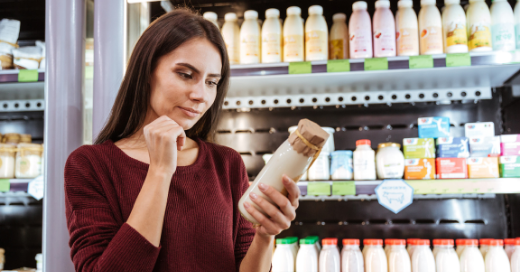
Clean label: an issue of transparency and trust
As the success of food scanning applications shows, the craze for “clean label” products is real. Consumers have increasingly high expectations in terms of traceability and transparency of the composition of the products they consume. Manufacturers are trying to meet this challenge.
The clean label: a response to consumer expectations
An attraction for simple and “free” ingredient lists
Around the world, 2 out of 3 consumers say they specifically avoid products with ingredients that are difficult to understand
Around the world, 2 out of 3 consumers say they specifically avoid products with ingredients that are difficult to understand[1]. They therefore prefer products with a simple composition and made from well-known traditional ingredients. This choice is explained by concerns surrounding the negative impact that certain ingredients, such as additives, could have on their health. For example, 49% of Germans avoid products containing artificial additives in order to stay healthy[2].
Also in line with this quest for health and well-being is the trend towards “-free” products: additive-free, gluten-free, lactose-free, etc. In addition to negative views towards additives, the question of food allergies and intolerances is being raised by a growing number of consumers. Today, 65% of the world’s population is considered to be lactose intolerant[3]. As a result, products launched with ‘digestive well-being’ and ‘lactose-free’ claims are thriving (CAGR of 5% between 2014 and 2018).
A need for naturalness and sustainability in diets
To enable consumers to make these choices, all this information must be accessible
On the other hand, consumers are looking for more naturalness in the food they eat. This naturalness is based not only on food production methods: origin, upstream agriculture, organic certification, etc., but also on the way in which the food is manufactured: processing and degree of transformation. This notion of naturalness goes hand in hand with issues of sustainability, which are also of prime importance to today’s consumers. The environmental impact of industrial processing of products encourages them to opt for more raw products. 33% of Irish people believe that eating clean label products is good for the environment2.
To enable consumers to make these choices, all this information must be accessible. Hence the very strong pressure on manufacturers to adopt a transparent approach.
The clean label market: where do we stand?
The indicators are green
There is no official definition of clean label, so there are no official figures on this growing trend. However, clean label product launches on the market are soaring.
In 2019, 1 in 3 product launches included a clean label claim. The percentage of clean label claims on foods and beverages enriched with milk protein also increased by 7% between 2015 and 20191.
The impact of a clean label on purchasing behavior
Clean label claims therefore have a direct impact on consumer purchasing behavior
Nearly two-thirds of US consumers say that ingredients influence their food and beverage purchasing decisions[4]. They prefer ‘clean’ and natural ingredient lists. Clean label claims therefore have a direct impact on consumer purchasing behavior. This is a key issue for manufacturers. Thus, labelling is a major driver in the food industry.
Clean label: a real challenge for manufacturers
Manufacturers face three major challenges in developing clean label products:
– Sourcing: finding natural ingredients for the clean label reformulation of their recipes.
– R&D: succeeding in preserving the organoleptic qualities of the product despite the modification of the list of ingredients.
– Communication: finding the right level of education for the consumer, without running the risk of being accused of greenwashing.
To help you meet the clean label challenge, discover our range of native proteins produced directly from milk: Pronativ® composed of Native WheyProtein and Native Micellar Casein. Our Laktein WPC 80/WPI range, proteins derived from whey, is also an excellent ingredient to enrich your clean label formulas.
[1] Innova Consumer Survey 2019. Average of UK, US, Spain, France, Brazil, India, Germany, Mexico and China
[2] Mintel Insights at Fi Europe 2021
[3] Talia F. Malik, 2021. Lactose Intolerence. Treasure Island (FL): StatPearls Publishing; 2021 Jan.
[4] IFIC Survey. From “Chemical-sounding” to “Clean”: Consumer Perspectives on Food Ingredients. June 17, 2021.














